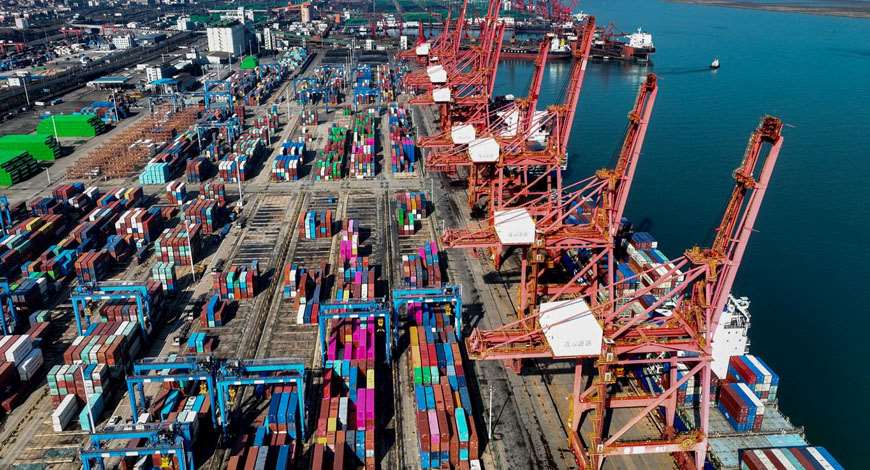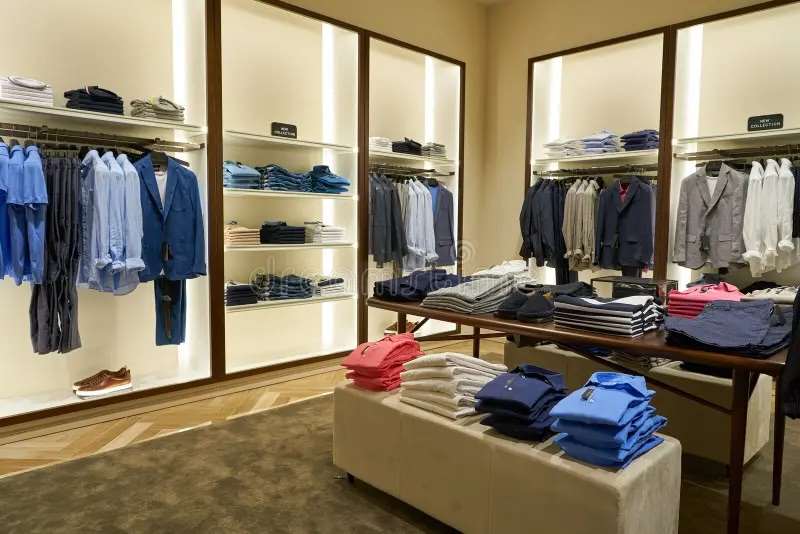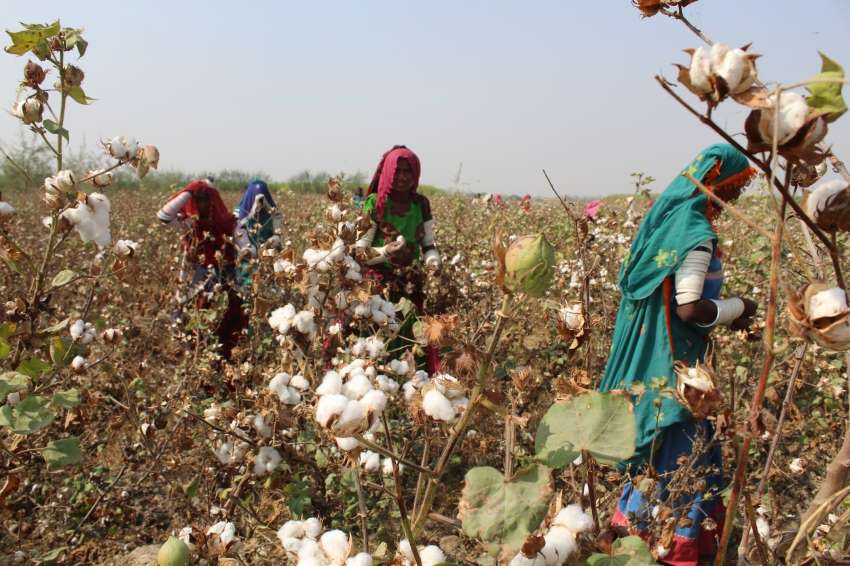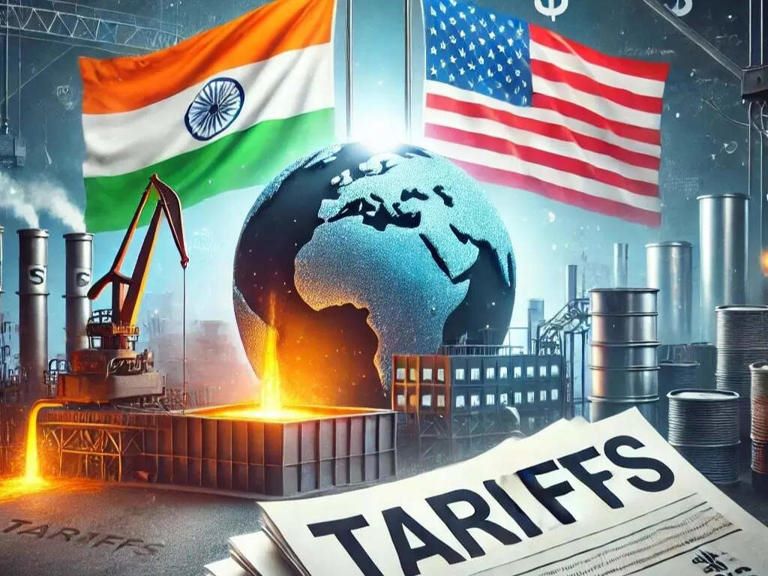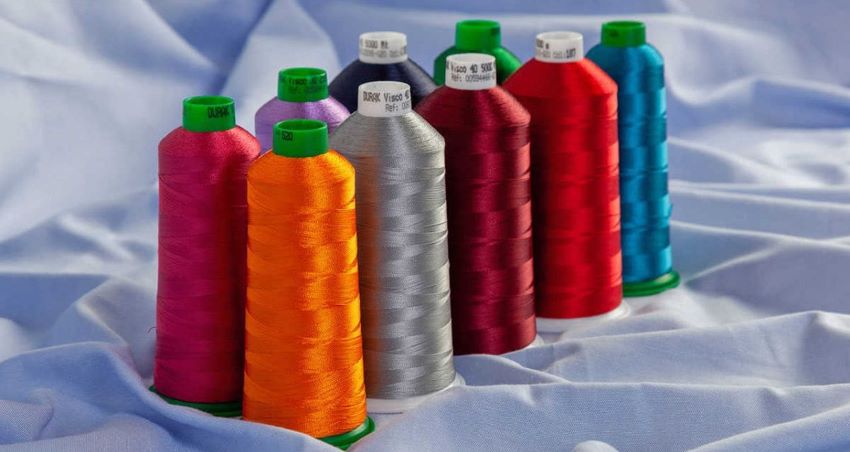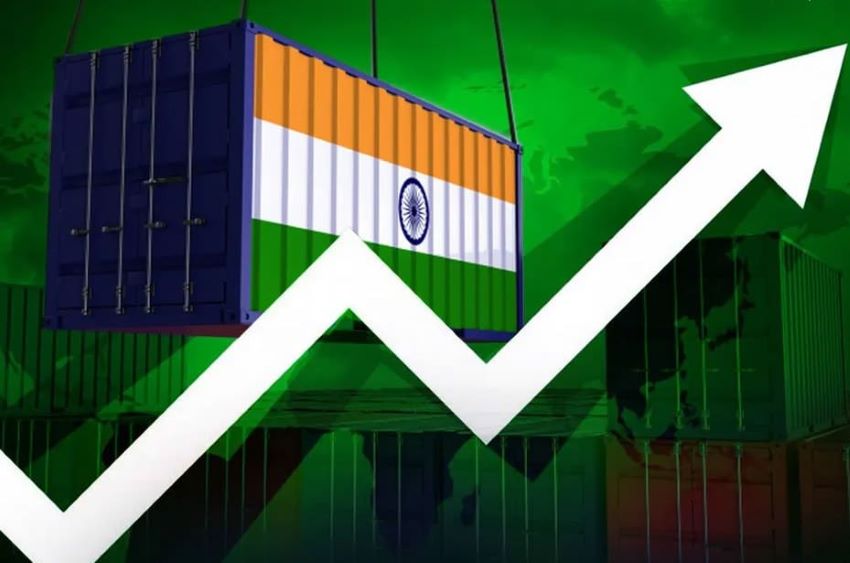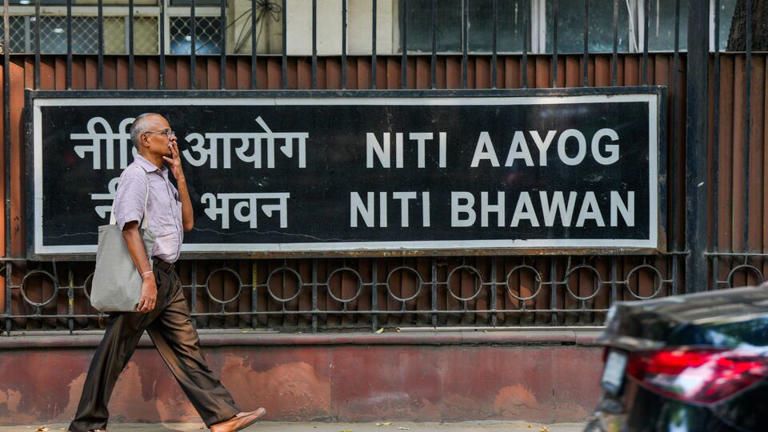FW
Menswear company Tailored Brands has appointed Julie Rosen and Lewis Bird III to its board of directors, effective March 2025.
According to the Houston-based company, the appointments allow Tailored Brands to focus on next phase of growth as Rosen and Bird collectively bring nearly seven decades of retail and business experience/to the company.
Having nearly thirty years of experience, Rosen has held leadership roles at prominent specialty retail brands, including The Gap, Ann Taylor, and Bath & Body Works. For the past eight years, she has served as president with overall profit and loss (P&L) responsibility for multiple companies, bringing extensive experience in business strategy, brand development, and operational leadership.
Similarly, Bird's career spans more than 35 years. He most recently served as Chairman and Chief Executive Officer, At Home Group, a home decor retailer. Prior to that, he served as Managing Director-Consumer Practice. The Gores Group; Group President, Nike affiliates, Nike Inc; Chief Operating Officer, Gap; and Chief Financial Officer, Old Navy.
Coinciding with the appointments, Bob Hull will step down as Executive Chairman of the board. Sean Mahoney, Board Member and Chair, Nominating and Governance Committee, will succeed him as chairman, effective May 3rd.
The addition of Julie and Lee underscores Tailored Brands' continued momentum and focus on the future. Their combined talent and expertise will help inform strategies to accelerate revenue growth and profitability, says Hull.
Tailored Brands is a specialty retailer of menswear, including suits, formalwear, and a broad selection of business casual offerings. Its portfolio includes Men's Wearhouse, Jos. A. Bank, Moores, and K&G Fashion Superstore.
Shift is set to return on June 29 and 30, following a successful debut. This year, the cutting-edge men's fashion event moves from the Yada Yada hall to MuZA in Zaandam, a larger and more striking venue within the Taets Art and Event Park.
Once a bullet factory, MuZA’s raw industrial aesthetic aligns perfectly with Shift’s forward-thinking vision. With over 4,500 square meters of space, the new venue allows for a greater number of brands, creating an expanded and immersive experience for visitors and exhibitors alike.
The decision to relocate to MuZA reflects Shift’s ambition and growth. The historic factory’s expansive halls, striking colonnades, and raw architecture provide an inspiring backdrop for a fashion event of this scale. The additional space enables Shift to feature more brands while also fostering unique and creative initiatives aimed at energizing retailers.
"We're excited to create a larger and more dynamic experience this year," says Rick van Rijthoven. "With the extra space, we're not just increasing the number of exhibitors but also introducing unexpected elements designed to inspire. Our plug-and-play concept makes it easy and cost-effective for brands to participate, encouraging international engagement and diversity."
Shift aims to establish itself as a leading international platform for retailers, buyers, and fashion professionals seeking the latest trends. The event will showcase a curated mix of established brands and emerging labels, offering opportunities to connect with designers and industry leaders. Beyond exhibitions, Shift will serve as a vibrant hub for networking and trend discovery, solidifying its position as a must-attend event in men’s fashion.
Shanghai Fashion Week is set to return from March 25 to 31, adapting to economic challenges while welcoming a surge of global brands. The fall 2025 edition will feature 100 brands, with EP Yaying opening the showcase. International labels such as Marchesa, Lorena Antoniazzi, Lsoul, and Auteur Studio will debut on the official calendar.
African designers will also make a strong presence, supported by the African Export-Import Bank. More than 20 brands from South Africa, Senegal, Ghana, Nigeria, and Egypt will showcase at Mode, the official showroom. The influx of brands from over 30 countries is partly driven by Shanghai’s ‘First in Shanghai’ initiative, which offers incentives for debut stores and launches.
Labelhood, the emerging talent platform, will balance cost and creativity with presentations from multicultural designers. Meanwhile, major names like Xander Zhou and Shuting Qiu will skip the official schedule.
Ralph Lauren will stage its first resee show in Asia on April 2, featuring its spring 2025 collections in a see-now, buy-now format. Additionally, Susan Fang will host an exhibition at Zhangyuan, and Fashion Asia Hongkong will spotlight 10 Asian designers.
The inaugural Sustasia Fashion Prize will announce its winner, and Authentic Brands Group will celebrate Champion’s new China partnership with Belle Fashion Group. Despite economic challenges, Shanghai Fashion Week continues to evolve, reinforcing its status as a key global fashion hub.
Despite Bangladesh's garment shipments to major markets like the European Union (EU) and the United States rebounding strongly in recent months, the price per unit of these garments has fallen.
For example, in January 2025, the unit price of garments shipped from Bangladesh to the US decreased by 2.20 per cent, according to data from the US Office of Textiles and Apparel (OTEXA). However, the value of exports grew by 45.93 per cent Y-o-Y during the month to reach $799.65 million. The volume of garments exports from Bangladesh to the US increased by 49.21 per cent during the month.
Similarly, the unit price of Bangladeshi-made garments shipped to the EU decreased by 4.84 per cent in the January-December period 2024, according to the latest data from Eurostat, the EU's statistical office.
Bangladesh's garment exports to the EU grew by 4.86 per cent to $19.77 billion last year. By volume, exports increased by 10.18 per cent in the same period. The EU's total apparel imports grew by 8.98 per cent.
The unit price of the EU's global apparel imports fell by 6.83 percent, significantly influenced by China's 8.43 per cent price reduction. Price cuts by Vietnam and Cambodia were also notable.
Historically, Bangladeshi garment exporters have received lower prices than those in competing countries.
The overall price of garment items traded globally declined last year and continues to do so this year, says Faruque Hassan, Managing Director, Giant Group and Former President, Bangladesh Garment Manufacturers and Exporters Association (BGMEA).
This decline is due to a drop in the prices of raw materials such as cotton, yarn, fabrics, and freight charges, he adds.
If the country ensures better quality and timely delivery, buyers will willingly pay more. Additionally, unhealthy price competition among local manufacturers is another factor behind the low prices paid by buyers, avers Hassan.
In the July-February period of the current fiscal year, Bangladesh's garment exports grew by 10.64 percent to $26.79 billion, according to data from the Export Promotion Bureau (EPB).
Of this amount, exports to the EU - accounting for 50.10 per cent of Bangladesh's total RMG exports - were valued at $13.42 billion.
Meanwhile, exports to the US reached $5.06 billion, representing 18.91 per cent of the total share.
Hlinc Golf, a premium waterproof golf apparel brand, has partnered with eVent Fabrics to incorporate its plant-based eVent Bio laminate into its product lineup. Launching in March 2025, Hlinc Golf offers high-performance waterproof and breathable golfwear, including jackets, trousers, vests, and hats, designed for the challenging conditions of Irish and Scottish links courses.
Chad Kelly, President of eVent Fabrics, emphasized the synergy between the two companies. “Hlinc is an ideal partner for us. Their commitment to PFAS-free, best-in-class products aligns perfectly with our mission.”
Under this exclusive agreement, Hlinc will be the sole golf brand in the UK and Ireland using eVent Bio Waterproof laminate for two years. Hlinc’s founder, Ian Forrester, highlighted the material’s advantages, including 33 per cent more breathability, reduced noise, and enhanced stretch, making it ideal for golfers. “This technology not only improves performance but is also better for the environment,” he said.
Hlinc’s debut collection includes the Long Sleeve Jacket (£210/€250), Gilet (£190/€230), Trouser (£180/€220), Bucket Hat (£38/€48), and Cap (£32/€38). The products are available at 19 links courses across Ireland and Scotland and online at www.hlincgolf.com
Meanwhile, eVent Bio Waterproof laminate is being rebranded as stormST, with the new name set to appear on Hlinc Golf and other partner products in the near future.
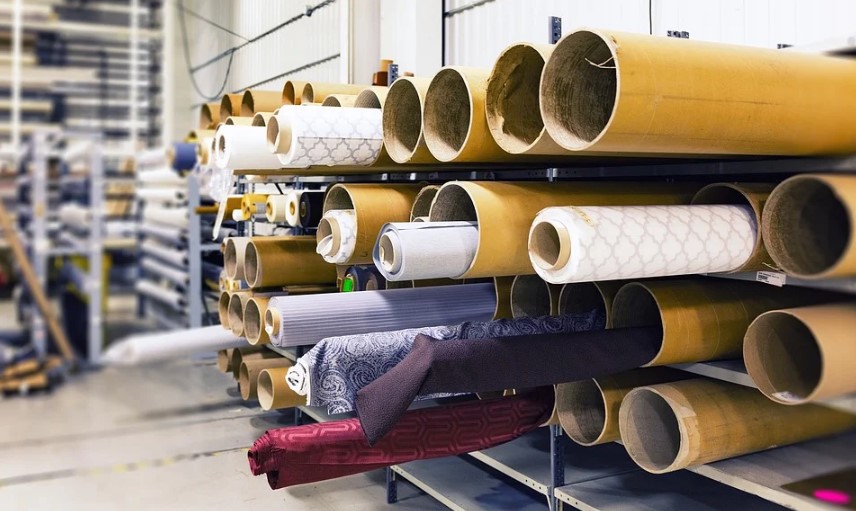
The global spandex market is stretching its way to significant growth, projected to reach a staggering $20.8 billion by 2033, says a recent market analysis. This represents a robust compound annual growth rate (CAGR) of 8.4 per cent from its current value of $9.3 billion in 2023. Driven by a growing demand for comfortable, flexible, and high-performance fabrics, spandex, also known as Lycra or elastane, is finding its way into an ever-expanding range of applications.
Activewear, athleisure market drivers
The key drivers behind this growth include the explosive popularity of activewear and athleisure, the increasing use of spandex in mainstream fashion, and technological advancements that enhance fabric performance, such as moisture-wicking and anti-odor properties. The rise of e-commerce and the growing popularity of compression garments for medical and athletic purposes are also significant contributors.
"The demand for spandex is being driven by the booming athleisure and sportswear market. Spandex’s flexibility, durability, and comfort make it ideal for activewear," the report notes. "The increasing focus on health and fitness is pushing the popularity of spandex in clothing designed for workouts, yoga, and casual wear."
North America currently leads the global market, holding a 42.2 per cent share in 2023, largely due to the region's strong focus on health and fitness. However, emerging markets, including India, are expected to play a crucial role in the market's future expansion.
India's spandex story
India's textile industry, a cornerstone of its economy, is witnessing a notable surge in demand for spandex. This growth is driven by rising disposable incomes, evolving lifestyle preferences, and the increasing adoption of Western fashion trends. As the Indian consumer becomes more health-conscious, the demand for activewear and comfortable apparel is also on the rise.
Growing consumption: India's spandex consumption is steadily increasing, due to growing apparel, sportswear, and hosiery sectors. The increasing demand for stretchable fabrics in denim, lingerie, and sportswear is a key factor.
Production capacity: While India's spandex production capacity is growing, it is still reliant on imports to meet the increasing domestic demand. Several Indian companies are investing in expanding their production facilities to capitalize on the growing market.
Imports and exports: India imports a significant portion of its spandex requirements, mainly from countries like China, South Korea, and Taiwan. However, there is a growing focus on increasing domestic production and exports to reduce reliance on imports.
Government initiatives: The Indian government's initiatives, such as the Production Linked Incentive (PLI) scheme for textiles, are aimed at boosting domestic manufacturing and attracting investments in the sector. This is expected to positively impact the spandex market.
As per reports, India's textile and apparel market is projected to grow substantially, which directly impacts the spandex consumption. Key players like Inviya and Hyosung are significantly contributing to India's spandex market growth.
Indorama India, with its Inviya brand, is a pioneer in India's spandex manufacturing. Notably, they were the first to establish a spandex production plant in India in 2011. Inviya has significantly increased its production capacity. Starting with 5,000 tons per annum, they have expanded to 20,000 tons per year. They offer a diverse range of spandex products, including those for woven and air-covered yarns, knits, and specialized applications like SnugFit for hygiene products. Inviya has continued to expand their production capabilities, and recently began production in their third plant, increasing production to 65 metric tons per day. Inviya also produces ECOModa100 a 100 per cent recycled spandex.
Hyosung too has established a significant presence in the Indian spandex market. Their plant in the AURIC Industrial Complex near Aurangabad, Maharashtra, has an annual production capacity of 18,000 tons of spandex. Hyosung with their CREORA TM brand of spandex, is a large global player, that has now increased its presence in the Indian market. Hyosung is focused on increasing its market share within India.
The global spandex market is set for a period of sustained growth, with India playing an increasingly important role. As consumer preferences continue to evolve and technological advancements drive innovation, the future of the spandex market looks bright. Companies that can adapt to changing market dynamics, embrace sustainability, and leverage technological advancements will be well-positioned to capitalize on the opportunities that lie ahead.
Led by Walid Gamal El-Din, Chairperson, The Suez Canal Economic Zone (SCZONE) has signed a land-use agreement with Chen Xiaodong, President, China-based JiangSu GuoTai International Group (GTIG), to establish a RMG factory in the Qantara West Industrial Zone.
To be set up with an investment of $10 million, this factory will spread across 21,000 sq m and is projected to generate 2,000 direct job opportunities. The factory will export its production to international markets, strengthening Egypt's position as a key player in the global textile and apparel industry.
Emphasizing on the SCZONE's ongoing efforts to attract foreign investment across its industrial zones and ports, Gamal El-Din highlighted Qantara West’s rapid development into a global investment hub, particularly for textiles, ready-made garments, and agro-industries.
To date, 15 land-use contracts have been signed in Qantara West, totaling $490 million in investments and covering over 1.031 million sq m, creating more than 20,000 job opportunities. These projects maintain an 80 per cent average export rate, with primary markets in Europe and the Americas. A key SCZONE facility, the West Port Said Port is expected to see increased trade activity, serving as a vital gateway for exports to Mediterranean and European markets.
The SCZONE has already started work on five projects within Qantara West, with the first two scheduled for inauguration in the H2, FY25. Gamal El-Din reaffirmed the authority’s commitment to localizing industries, supporting workforce development, and maximizing the benefits of SCZONE’s economic tools, which include integrated industrial clusters, seaports, logistics zones, investment incentives, and free trade agreements that provide broad market access.
Founded in 1988, GTIG is a leading Chinese conglomerate, specializing in textiles, garments, spinning, yarns, fabrics, home textiles, and accessories, with operations across Asia, Europe, and the United States. Employing over 4,000 people, GTIG reported revenues of $9.2 billion in 2023, solidifying its position as a global industry leader in manufacturing.
This agreement reinforces Egypt’s growing appeal as a preferred investment destination for international textile manufacturers and is set to significantly contribute to job creation, industrial growth, and export expansion within the SCZONE.
Archroma has implemented advanced Zero Liquid Discharge (ZLD) technology at its Mahachai plant in Thailand, achieving 90-95 per cent wastewater recovery. Developed by Gradiant, a leader in water treatment solutions, the system enhances water circularity and extracts valuable minerals for industrial use.
Located in a water-stressed region near Bangkok, the Mahachai plant now serves as a model for sustainable textile dye production. Archroma’s partnership with Gradiant reinforces its commitment to responsible water management, reducing dependence on local water sources and improving environmental resilience.
Dhirendra Gautam, VP Global Marketing and Strategy at Archroma, emphasized the company’s broader sustainability goals. “We innovate to eliminate toxins, ease wastewater treatment, and ensure our plants in water-stressed areas prioritize conservation,” he said.
Since 2019, Archroma has explored ZLD solutions to address Thailand’s water challenges. Gradiant’s Counterflow Reverse Osmosis (CFRO) was chosen for its high efficiency in treating diverse wastewater compositions with minimal energy consumption. Integrated with Free Radical Oxidation (FRO) technology, the system removes contaminants and enables brine recovery for reuse in dyeing and other industrial applications.
Prakash Govindan, COO of Gradiant, highlighted the impact of the project. “This partnership shows how advanced water treatment can maximize recovery and minimize environmental impact without affecting efficiency,” he said.
With Thailand facing increasing water stress, Archroma’s multi-million-dollar investment ensures long-term sustainability. The company continues to expand ZLD initiatives globally, including its Sustainable Effluent Treatment (SET) plant in Pakistan. Through innovation, Archroma remains committed to transforming the textile industry with eco-friendly solutions.

India's ‘Make in India’ initiative faces numerous challenges as Quality Control Orders (QCOs) draws criticism for stifling export competitiveness, particularly in the critical man-made fiber (MMF) sector. A recent analysis in the Business Standard highlights the detrimental impact of these QCOs, intended to safeguard consumers but now seen as a major impediment to trade. The report underscores how these measures represent a worrying trend towards protectionism, reversing decades of economic liberalization.
The report reveals an increase in the implementation of QCOs, with the number of products under their purview skyrocketing from a few dozen in 2011 to nearly 775 by 2024, covering over 100 sectors. This "astonishing expansion of bureaucratic control over trade," as the report calls it, is raising alarm bells, especially for MMF, where QCOs cover almost 100 per cent of imports.
MMF sector hit hard
The impact of QCOs is particularly visible in the MMF sector, a key component of the apparel industry. Man-made fibers like polyester and viscose are essential inputs for manufacturing garments, especially those used by major global brands. However, policy shifts, especially the imposition of QCOs, have severely disrupted the import of these crucial materials.
As the Business Standard analysis points out, the restrictive policies initially kept imports low. A subsequent tariff reduction in 2022 allowed domestic apparel firms to increase tapping foreign suppliers, but the advantage was short-lived. The implementation of QCOs led to a sharp decline in imports, directly impacting the industry's ability to compete globally.
The report shows the number of products under QCOs has seen exponential growth. Import of MMF inputs like polyester yarn and viscose staple fiber has been volatile, directly influenced by policy changes. India's share of global MMF apparel exports has suffered setbacks due to policies.
"Policy whiplash" is how an expert described the situation, highlighting the conflicting signals from the government. "First, tariffs were reduced, which was a welcome move, but then QCOs were imposed, effectively negating any benefit. It's like taking two steps forward and three steps back," the expert said.
The burden of compliance
The QCO regime mandates that foreign suppliers obtain certification from the Bureau of Indian Standards (BIS). This process involves BIS officials inspecting factories abroad, assessing production processes, and conducting rigorous testing. "The certification process is cumbersome and time-consuming," says a representative from a garment exporter association. "Small and medium-sized enterprises (SMEs) are particularly affected as they lack the resources to navigate this bureaucratic maze. In some cases, it’s not clear why the Indian standards are better or different from the international standards we already adhere to.” Indonesia has even raised concerns at the World Trade Organization (WTO) regarding India's certification process for its viscose exporters, highlighting the potential for trade disputes.
Economic consequences
The Business Standard analysis emphasizes the broader economic implications of these protectionist measures. India's share in global MMF apparel exports, which had been growing, nearly halved after import tariffs were significantly increased in 2017. While tariffs were rolled back in 2022, the subsequent QCO implementation has continued to damage the industry.
"The cost of renewed protectionism is being paid in terms of exports, economic growth, and jobs," states the Business Standard report. The garment sector is labor-intensive, while MMF production is capital and energy-intensive. Therefore, these policies risk destroying jobs in the garment sector while benefiting a few large domestic MMF producers.
Beyond garments
The impact of QCOs extends beyond the garment industry. The Business Standard report notes their pervasive use in the footwear and solar panel sectors, among others. In the solar panel industry, QCOs are criticized for increasing the cost of renewable energy and hindering India's transition to sustainable energy sources.
The analysis strongly advocates for the elimination of QCOs. It draws a parallel to the "license-quota-permit Raj" of India's past, arguing that QCOs represent a resurgence of economic nationalism, arbitrary interventionism, and crony capitalism.
"Indian exporters are already facing stiff challenges in the global market," the report states. "The last thing they need is to be hamstrung by domestic policies. QCOs must be removed immediately; it is a matter of survival for this vital sector of the Indian economy."
Inditex remains optimistic about its US expansion despite tariff challenges, CEO Oscar Garcia Maceiras. The Zara owner, which has 97 Zara stores and one Massimo Dutti outlet in the US, sees continued growth in its second-largest market.
Inditex's Americas sales share fell to 18.6 per cent in 2024, while Europe and Spain gained ground. Garcia Maceiras emphasized the company’s ability to adapt, sourcing from 50 countries to mitigate tariff risks.
While US Zara prices have risen dresses up 22 per cent to $86.44 and tops up 8 per cent to $63.60 Garcia Maceiras assured stable pricing ahead. The shifting trade landscape, with potential tariff hikes under Donald Trump, adds uncertainty.
Despite a slow start to first-quarter sales, Inditex remains committed to long-term growth, with CEO Oscar Garcia Maceiras emphasizing the company’s ability to navigate market volatility through its business model and strategic approach in the US market.

